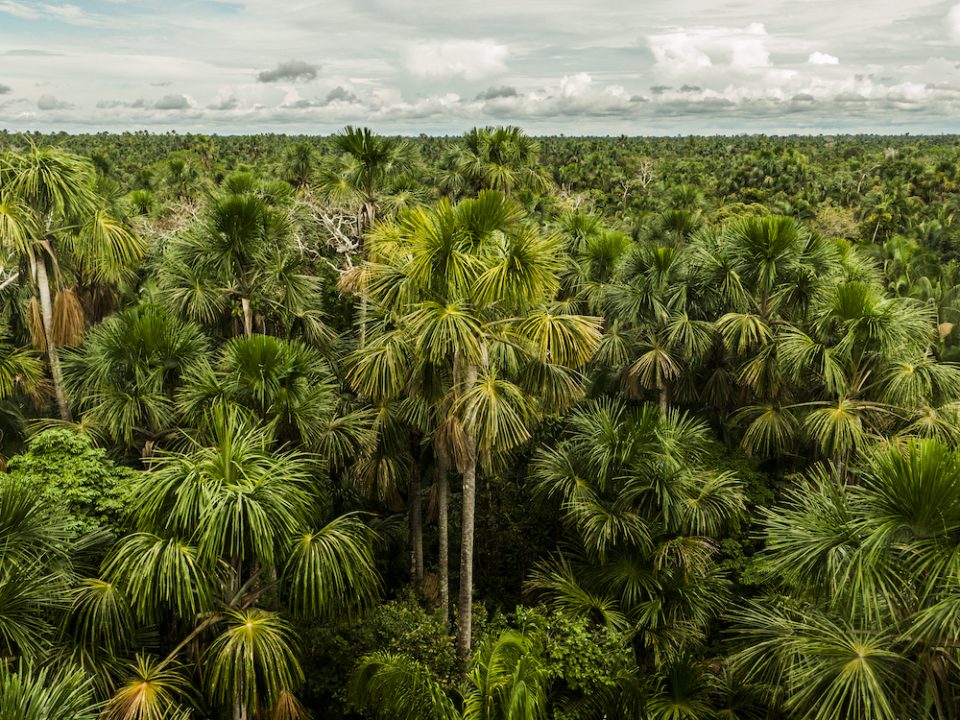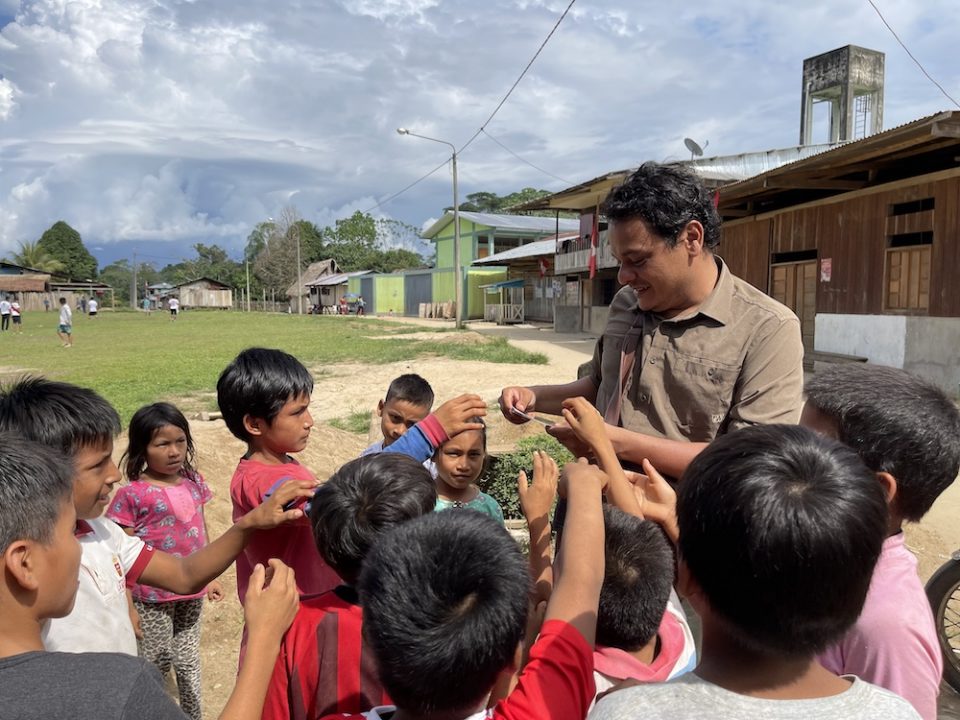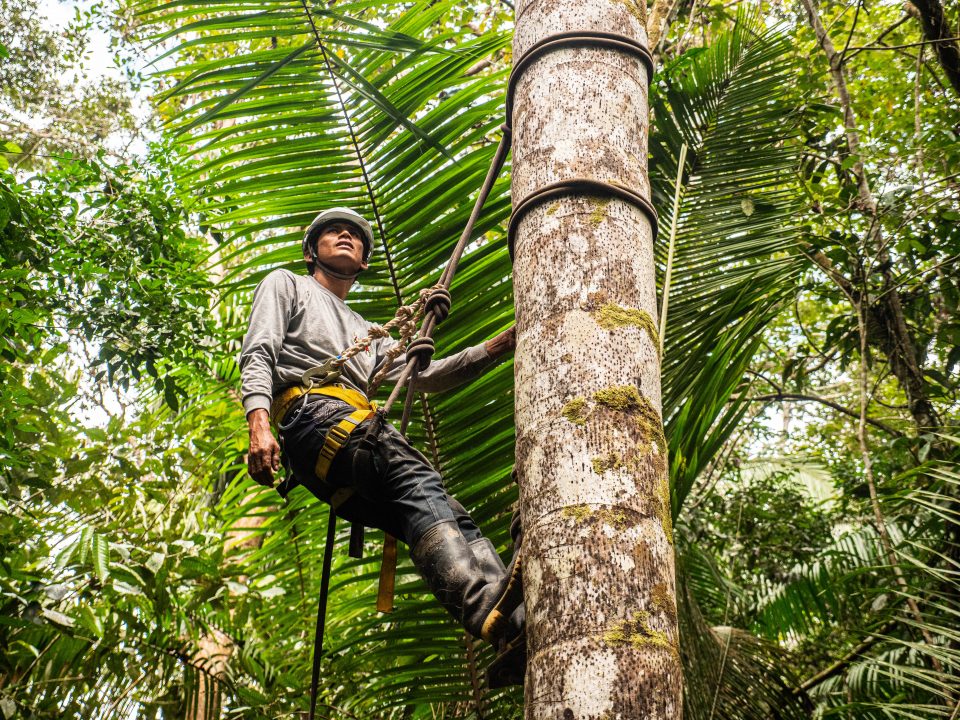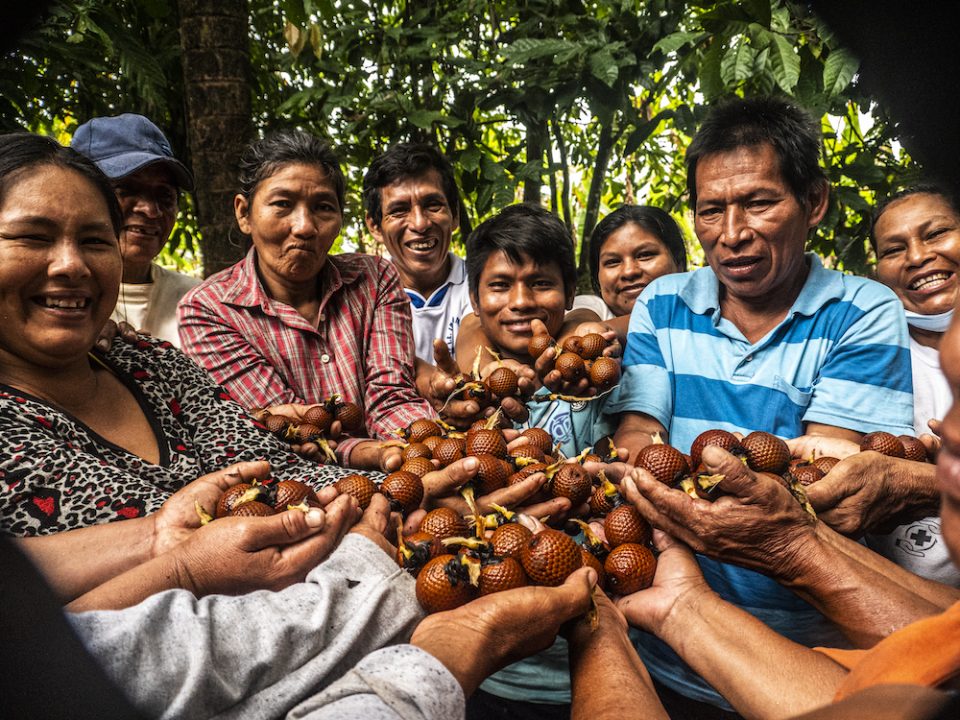Photo essay: Superfruits for Forest Conservation
Lenin Quevedo is a Peruvian filmmaker and former journalist who has spent the past several years working on a variety of film projects in the Amazon. His latest project focuses on the initiative Superfruits for Forest Conservation, which is helping to support local communities in the Loreto region of Perú while also protecting standing forests. Quevedo says the project stands out among those he has worked on for its emphasis on sustainability and forest protection. From logistical challenges to linguistic and cultural barriers, filming in the Amazon requires an understanding of the “codes and rules” that exist in the forest, Quevedo explains. He spoke with EII Research Associate Ana Maria Gonzalez.
What drew you to focus on the Amazon as a filmmaker?
I spent many years working as a journalist and would often get assignments to cover issues related to the forest, for example violence targeting indigenous communities or environmental concerns around the oil palm sector. This is what initially drew me to the subject. Later I began to receive requests for films about various forest products, or about conservation activities. I eventually decided to leave journalism behind and focus exclusively on filmmaking. I’ve since worked on over a dozen projects, visiting Amazonian towns and communities in Perú and across Latin America. And in that time, I’ve fallen in love with the forest.

What are the specific challenges to filming in the Amazon?
Transportation is a big one. It can be complicated, and at times expensive. Often there is no public transportation and so you have to figure out how to reach a certain destination. Unexpected delays or mishaps are also not unusual.
Language is another challenge. I once worked on a project with the indigenous Awajún community. Nobody in the community spoke Spanish, and so we first had to try to make ourselves understood. We shared photographs, demonstrated how the drone worked, told a few jokes… it all became part of a routine that we developed to earn the trust of the communities that we work with. There are also certain beliefs, such as that taking someone’s photo is tantamount to taking a part of their soul. That can be difficult when you’re filming. As a filmmaker, you have to try and dispel those fears, to show people that you are there to work with them. Ultimately, to work effectively in the Amazon and with Amazon communities, I think you must have an Amazonian heart. You have to understand that there are different codes, different rules inside the forest. If you can do that, you can build a strong connection to the communities, and for me, that is one of the nicest things that can happen.


What sort of challenges did Covid present?
What was difficult at the start of the pandemic were all the protocols, which varied from region to region and from one community to another. That was a challenge. I had COVID in June of last year, and so I was less worried about contracting the virus again. But I was aware of our responsibility not to infect anyone in the communities we were working in. That was my biggest concern. And fortunately, that did not happen.
Is there anything that stands out to you about this latest project you’ve worked on?
The sustainability is what really caught my attention. This entire project is centered on native Amazonian fruits that grow naturally in the forest and are therefore more ecofriendly. What I saw during the days I spent filming was a real opportunity for families and communities living in protected areas like Pacaya Samiria to earn an income from the forest without degrading it.


Was there anyone you encountered during filming that stands out to you?
Arvildo Uraco Canaquiri is a very interesting person. He has a tremendous amount of experience; he knows the region and he brings a global perspective to the work that is often difficult to find. Karina Hualinga is another person who really caught our attention. She was a complete surprise. We were looking for someone who we could focus on, a character that we could develop. Initially we considered someone else, but after listening to Karina we decided to focus on her. She was like the matriarch of the community. She was so well-spoken, she was so engaged in the project, and she wanted to share her story.



